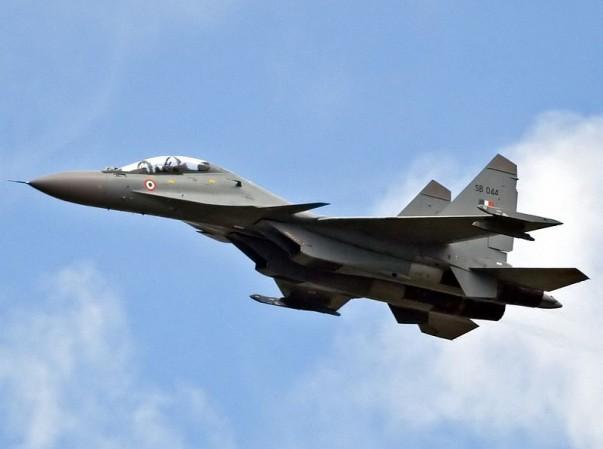
The Indian Air Force is looking to purchase 18 additional Sukhoi-Su-30MKI multirole fighter aircraft from Russia, the deputy director of Russia's Federal Service for Military-Technical Cooperation (FSMTC) has said. According to Vladimir Drozhzhov, Russia has also offered a range of bids for military weapons to India.
"We have fully met our commitments on delivering all technological sets of Su-30MKI fighter jets and have received an additional bid for another 18 technological sets," Drozhzhov told TASS news agency. "The bid is being worked out," he added.
Around 222 Su-30MKIs, that was agreed upon under various previous defence contracts from 2000 onwards, were confirmed to have been delivered to be licence-built in India. Moscow also said that it is processing New Delhi's request for 20 additional advanced MiG-29UPG twin-engine jet fighter aircraft.
In the 1990s, IAF received 50 fly-away condition Su-30 jets from Russia for an estimated $1.5 billion. India later pursued a deal to licence build 140 Su-30's at the state-owned Hindustan Aeronautics Limited (HAL) plant in Nashik, India. In the past, India signed defence deals with Russia, one in 2007 and the other in 2012, to build 82 additional fighter jets under licence, according to IHS Jane's.
In the recent deal with Russia, India seeks 13 squadrons totalling 272 Su-30MKIs which the IAF will be able to operate by 2020-21.
Official sources told IHS Jane: "Along with the powerpack, missile systems, and other major components, Russia has also provided HAL with 5,803 types of titanium blocks and forgings as well as aluminium and steel plates to assemble the aircraft. It has also provided HAL with about 7,100 'standard components' that include nuts, bolts, and rivets."
HAL sources have reportedly said that around 50 percent of Su-30MKIs are indigenously built.
In 2018, HAL had offered to produce 40 Sukhoi Su-30MKIs for the IAF. In June 2019, it was reported that the IAF is considering to integrate the Sukhoi Su-30MKI multirole fighters with Israel-made Rafael Advanced Defence Systems I-Derby extended range (ER) Beyond-Visual-l-Range Air-to-Air Missile (BVRAAM) by 2022. The decision was strengthened after the military operations over the Line of Control (LOC) in the aftermath of the Pulwama attack in February this year.
Defence experts have pointed out that Rafale's extended-range (ER) variant, which offers advanced guidance system and software-defined radar seeker, should replace the ageing Russian Vumpel R-77 (AA-12 "Adder") air-to-air missiles (AAMs) currently carried by the Su-30MKI. The Diplomat reported that the Israeli dual-pulse solid rocket motor has an estimated range of 100 kilometres and can reach top speeds of Mach 4.
"We already have the missile as part of the SPYDER (Surface-to-Air Missile) system," Indian Air Force official told NDTV in May, "Integration (with the IAF's Su-30s) is the next step.''
HAL's proposal to manufacture the additional aircraft was also a part of the Ministry of Defence to fit Su-30MKIs with BrahMos missiles. "We are required to modify 40-odd Sukhoi-30s to carry the BrahMos ALCM [air-launched cruise missile]. Instead of upgrading older fighters, with a shorter residual lifespan, it would be better to build three more squadrons of Sukhois with the capability to carry BrahMos missiles," HAL chairman T. Suvarna Raju, told media on May 15.
As of December 2018, HAL has manufactured 202 Su-30MKI aircraft in India.

















